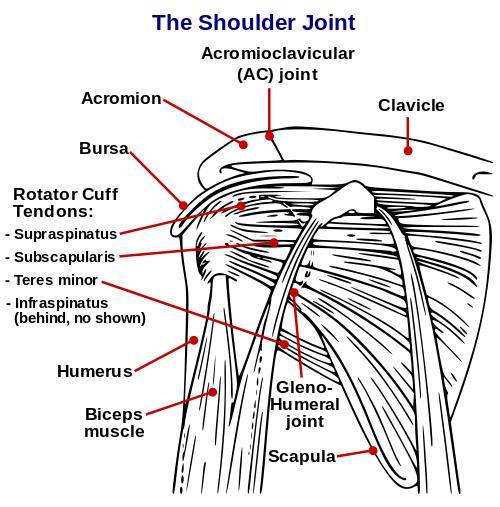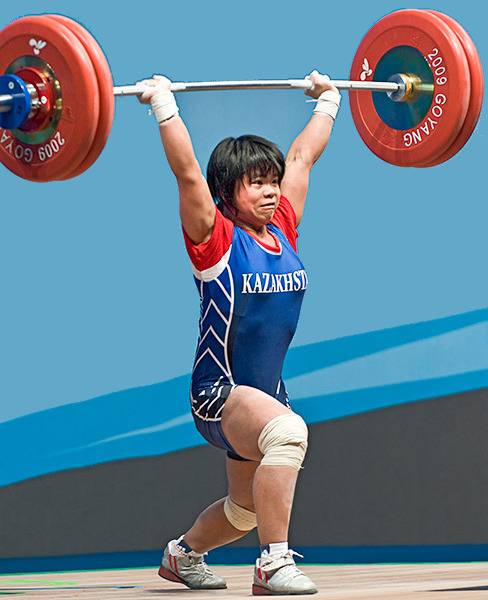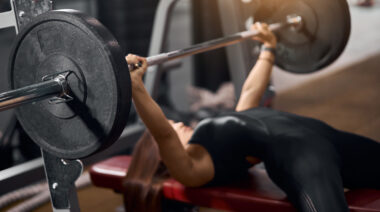I am passionate about what I do. Luckily for you, I’m even more passionate about what you do. You do some amazing stuff. You’re dancers, you’re track stars, you crush WODs, and you find your inner warrior on the daily. You use your body in incredible ways to accomplish seemingly superhuman feats. I mean, have you seen Cirque de Soleil? And how about the 2014 NFL Combine? I’m still in awe of guys well over six feet tall tipping the scales beyond 300 pounds who clock a 4.5 second 40m sprint. That’s like a Volkswagen Beatle heading your way at a solid 20 mph. I’d move. And while most us have no business even attempting this, you have to admit that you too are a little bit impressed at what the body can do (even if it’s someone else’s).
Whether your goal is to wrap your feet around your skull like wrestling headgear or to outrun Usain Bolt (if so, good luck with either of those), you need hard work, determination, perseverance – blah, blah, blah – save that for your motivational speakers. Bad news first: for that kind of elite performance, you might want to start playing the genetic lottery. The good news? You, an acrobatic performer, and Usain Bolt all have something in common. Generally speaking, any movement produced by any human body must follow the same biomechanical and kinematic principles. In other words, you, an acrobat, and Bolt all move your bodies in accordance to the same laws of movement. Those guys happen to follow the rules exceptionally well, but you can, too- if you know what the rules are.
Not Just What, But Why
Only you know what your goals are and why you use your body to do whatever it is you love to do. Regardless of your specific sport, there are many solutions to better your skills and correct your errors. Too many. No one needs to be doing hours of corrective exercise and mobility drills to reduce a little shoulder impingement. Just like your movement patterns, your prehab or rehab should be as efficient as possible. Therefore you need to know not just what to do, but why.
Rules of Movement
Perhaps you are familiar with the mobility versus stability debate. Which one comes first? Developmentally speaking, the answer is mobility. Next comes stability, followed by controlled mobility, and finally skill. While we are all ever-evolving individuals, I hate to break it to you – we are done developing. At least in the traditional sense. For anyone who has surpassed (and survived) adolescence, you cannot have mobility without stability, and vice versa. In an ideal world, controlled mobility and skill are then honed on top of a solid foundation of mobility and stability. These rules apply to the body as a whole, but let’s focus first on applying them to the shoulder.
A Quick Shoulder Anatomy Lesson
In my last article The Scapula: How It Can Make Or Break You, I covered the basics of the shoulder complex, but here’s the long and short of it: the spine is your foundation. The ribs connect to the spine making a surface for the scapula to sit on. The scapula is the socket, as in ball and socket. The ball and socket connects the arm to the core. The grouping of your thoracic spine and ribs with the scapula is called the scapulothoracic joint (STJ) and the ball and socket is officially termed the glenohumeral joint (GHJ). Like all joints, the STJ and GHJ are controlled by muscles. Now you’re caught up.

Overhead Movement Rules
You, an acrobat, and Usain Bolt all need to get your arm over your head. You need to crush “Karen” and throw 150 wall balls. The acrobat needs to hold a single-arm handstand while doing a split and juggling with the other arm. Bolt needs to fist pump in celebration of being the fastest man on Earth. Each of you needs to perform overhead shoulder movement. The results are all different, but each of these actions follows the same rules.
Overhead Movement Rules: Mobility
From a mobility perspective, in order to reach into an overhead position your thoracic spine, scapulothoracic joint, and glenohumeral joint need to perform extension, upward rotation, and flexion coupled with external rotation, respectively. All the surrounding soft tissue must be elastic enough to allow these movements, including musculature as well non-contractile tissue like joint capsules and ligaments. Additionally, you need adequate strength to produce the motion. In other words, if you don’t have mobility of the involved tissues in the first place, no amount of strength will power you into full overhead motion while on the flip side, regardless of how mobile you are, if you aren’t strong enough to lift your arms up, you won’t be able to move into all of that available range of motion.
Overhead Movement Rules: Stability
Strength and stability are different. I address strength with mobility for the simple reason that a muscle needs to be strong enough to produce movement. Having enough strength to move is not the problem for most people. Stability on the other hand is more advanced and although the act of stability is difficult, the concept of is simple – hold still. We achieve stability through co-contractions. What happens if you squeeze your push muscles at the same time that you squeeze your pull muscles? Muscles are pulling equally on opposite sides of a joint, like a dead heat of tug-of-war. Nobody moves. You’ve got stability.
In preparation for overhead movement, the core stabilizers fire first (like always). Next, the upward and downward rotators of the scapula co-contract to actively hold the shoulder blades against the underlying thoracic spine and ribcage. Lastly, the rotator cuff contracts, anchoring the ball into the socket. Stabilizing each segment effectively links otherwise separate joints together, forming what we refer to as a kinetic chain.
Overhead Movement Rules: Controlled Mobility

When you combine stability and mobility, you get controlled mobility. Hold something still and move something else. Stabilize your core, and raise your arm. Controlled mobility yields functional movements that we use throughout our life and demands a dynamic stability, changing in response to the movement. Dynamic stability is more like a well-matched game of tug-of-war. Teams on either side of the rope take turns dominating the game, moving the red flag in the middle, but never let tension of the rope release.
Once we’ve stabilized, to move our arms overhead the scapula moves into upward rotation as the upper trap, lower trap, and serratus anterior overpower the downward rotators. This fundamental movement must occur for any kind of overhead movement – forward raise, lateral raise, push press – any kind.
Overhead Movement Rules: Skill
Juggling, fist pumping, wall balls. Skill work depends on what you want (or need) to use your overhead position for. Let’s leave the skill for your coaches. But before you even bother with the fancy stuff, focus on controlling your mobility, as this is where it all starts to go wrong.
Drills
Sequencing is key, and just like your joints move in a specific order to produce overhead movement, the following exercises are good drills to activate muscles, layer movements together, and prep for overhead work.
Drills: Activating Stabilizers
Drill #1 – T’s and Y’s:
Drill #2 – T’s and Y’s:
Drill #3 – Bilateral external rotation:
Drills: Sequencing Controlled Mobility
Drill #4 – Wall Slides:
Drill #5 – Forearm wall slides:
A little basic prep work goes a long way. You can’t run before you walk, and you certainly can’t master overhead skills without controlling your scapular mobility first.
Photo 1 courtesy of Shutterstock.
Photo 2 by National Institute Of Arthritis And Musculoskeletal And Skin Diseases (NIAMS); SVG version by Angelito7 (Shoulderjoint.PNG) [Public domain], via Wikimedia Commons.
Photo 3 by Chinshanlo.jpg: Rob Macklem Victoria BC derivative work: Plasticspork (Chinshanlo.jpg) [CC-BY-SA-3.0], via Wikimedia Commons.






